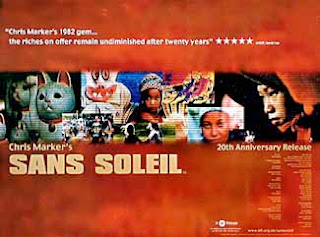Cinematheque: Gertrud (Dreyer, 1964)
 It’s been a few days since I saw this, which breaks my ‘post-the-next-day’ rule, but I don’t think I should even be writing anything about this film without having seen it at least two more times. It is dense, both in information, and with emotion. Dreyer’s last film plays out like one would expect a great filmmaker’s final film to play out, even though he didn’t pass away until over three years after Gertrud was released. Same thing with Altman; how perfect a film to go out on than the playfully morose A Prairie Home Companion; and Kubrick, who couldn’t have ended his career with a more badass line of dialogue. But, Dreyer’s final scene is less ‘what a great way to wrap things up!’ than ‘oh, how can I watch any of his films again without welling up?’ Gertrud seems to be the sum of all of Dreyer’s previous most important and devastating women: Jeanne, Inger, Leone, Herlofs; she is kind of a statue memorial to all of them. Gertrud, and most of the men in the film, seems to be a pinocchio who briefly breaks from her stillness to say a line of dialogue before retreating into her motionless daze. It feels self-consciously theatrical, and appropriately creepy. Are these people dead already? Is this a ghost story? Gertrud could definitely be a ghost. She appears in frame mirrors (see attached poster) and looks at herself with uncomfortable apathy and iciness, as if she can’t comprehend why it is that she can see her reflection. When she goes to Erland’s house and makes love to him on the night of the first day of the film, she goes into the bedroom, and we see her shadow as she undresses, as if Dreyer is trying to reassure the viewer that her body is physically there. That glow that follows her is awfully angelic.
It’s been a few days since I saw this, which breaks my ‘post-the-next-day’ rule, but I don’t think I should even be writing anything about this film without having seen it at least two more times. It is dense, both in information, and with emotion. Dreyer’s last film plays out like one would expect a great filmmaker’s final film to play out, even though he didn’t pass away until over three years after Gertrud was released. Same thing with Altman; how perfect a film to go out on than the playfully morose A Prairie Home Companion; and Kubrick, who couldn’t have ended his career with a more badass line of dialogue. But, Dreyer’s final scene is less ‘what a great way to wrap things up!’ than ‘oh, how can I watch any of his films again without welling up?’ Gertrud seems to be the sum of all of Dreyer’s previous most important and devastating women: Jeanne, Inger, Leone, Herlofs; she is kind of a statue memorial to all of them. Gertrud, and most of the men in the film, seems to be a pinocchio who briefly breaks from her stillness to say a line of dialogue before retreating into her motionless daze. It feels self-consciously theatrical, and appropriately creepy. Are these people dead already? Is this a ghost story? Gertrud could definitely be a ghost. She appears in frame mirrors (see attached poster) and looks at herself with uncomfortable apathy and iciness, as if she can’t comprehend why it is that she can see her reflection. When she goes to Erland’s house and makes love to him on the night of the first day of the film, she goes into the bedroom, and we see her shadow as she undresses, as if Dreyer is trying to reassure the viewer that her body is physically there. That glow that follows her is awfully angelic.
But if ‘Love is All,’ as is said in the film, then what is Gertrud? The film treks through a couple of days in her life that all but prove that this woman is incapable of finding a love that can satisfy her. Dreyer uses archetypes to prescribe Gertrud desolation. Like Stalker‘s portrayal of godlessness via a writer and a scientist, and the strict niche’s a of faith depicted in Dreyer’s previous Ordet, I thought that Gertrud‘s sense of barrenness was being sculpted by its existence as an excessively academic thesis on love. If Love = A or B or C, and Gertrud = -A, -B, and -C, then Gertrud = cold, distant zombie. The film managed to feel like one of the most comprehensive studies of a woman’s need to love, while also feeling like the completely wrong approach to the subject. How can I grasp what this woman yearns for and how she feels when she doesn’t get it when there is no entry point into her heart? There seems to be an academic/objective explanation for each reason why she is incompatible with each man in her life. But, in reality, if the big issue is ‘your work is more important than I am’ or ‘A woman’s love and a man’s work are mortal enemies’ or ‘I don’t have the funds to leave with you, ‘ then can’t we work around this? Gertrud is not only incapable of compromise, but stubbornly self-destructive. It is in her nature to not get what she wants. Thus, as she gives up on love, and becomes a recluse to the idea and to people in general, and she has picked apart the end of her life, and planned even for what the living will for her after she is dead (‘you will stand on my grave and you will…’), Gertrud becomes the ultimate melodrama, even though it doesn’t seem to contain a clear melodramatic moment.
Cinematheque: Gertrud (Dreyer, 1964) Read More »








